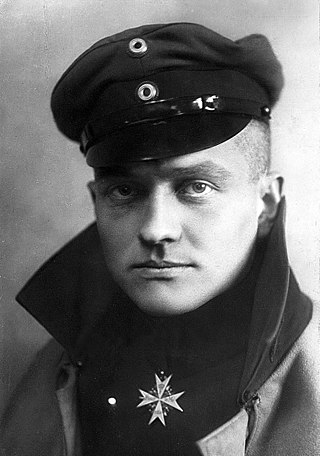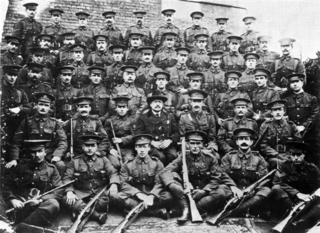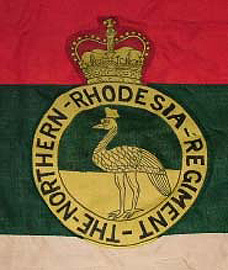
Southern Rhodesia was a landlocked self-governing British Crown colony in southern Africa, established in 1923 and consisting of British South Africa Company (BSAC) territories lying south of the Zambezi River. The region was informally known as south Zambesia until annexed by Britain at the behest of Cecil Rhodes's British South Africa Company, for whom the colony was named. The bounding territories were Bechuanaland (Botswana), Northern Rhodesia (Zambia), Moçambique (Mozambique), and the Transvaal Republic.

A flying ace, fighter ace or air ace is a military aviator credited with shooting down five or more enemy aircraft during aerial combat. The exact number of aerial victories required to officially qualify as an ace is varied, but is usually considered to be five or more.

The following are lists of World War I flying aces. Historically, a flying ace was defined as a military aviator credited with shooting down five or more enemy aircraft during aerial combat. The term was first used by French newspapers, describing Adolphe Pégoud as l'as, after he downed seven German aircraft.

The Rhodesian Security Forces were the military forces of the Rhodesian government. The Rhodesian Security Forces consisted of a ground force, the Rhodesian Air Force, the British South Africa Police, and various personnel affiliated to the Rhodesian Ministry of Internal Affairs. Despite the impact of economic and diplomatic sanctions, Rhodesia was able to develop and maintain a potent and professional military capability.
This is a list of World War II-related topic lists:
Benjamin Roxburgh-Smith (1884–1951) was a British World War I fighter ace credited with 22 aerial victories. After the war, he pioneered aviation in southern Africa. He also served in World War II.

When the United Kingdom declared war on Germany at the start of World War I in August 1914, settler society in Southern Rhodesia, then administered by the British South Africa Company, received the news with great patriotic enthusiasm. The Company administrator, Sir William Milton, wired the UK government, "All Rhodesia ... ready to do its duty". Although it supported Britain, the company was concerned about the possible financial implications for its chartered territory should it make direct commitments to the war effort, particularly at first, so most of the colony's contribution to the war was made by Southern Rhodesians individually—not only those who volunteered to fight abroad, but also those who remained at home and raised funds to donate food, equipment and other supplies.

Ioannis Agorastos "John" Plagis, DSO, DFC & Bar (1919–1974) was a Southern Rhodesian flying ace in the Royal Air Force (RAF) during the Second World War, noted especially for his part in the defence of Malta during 1942. The son of Greek immigrants, he was accepted by recruiters only after Greece joined the Allies in late 1940. Following spells with No. 65 Squadron and No. 266 (Rhodesia) Squadron, he joined No. 249 Squadron in Malta in March 1942. Flying Spitfire Mk Vs, Plagis was part of the multinational group of Allied pilots that successfully defended the strategically important island against numerically superior Axis forces over the next few months. Flying with No. 185 Squadron from early June, he was withdrawn to England in early July 1942.

Southern Rhodesia, then a self-governing colony of the United Kingdom that is located in the now-independent Zimbabwe, entered World War II along with Britain shortly after the invasion of Poland in 1939. By the war's end, 26,121 Southern Rhodesians of all races had served in the armed forces, 8,390 of them overseas, operating in the European theatre, the Mediterranean and Middle East theatre, East Africa, Burma and elsewhere. The territory's most important contribution to the war is commonly held to be its contribution to the Empire Air Training Scheme (EATS), under which 8,235 British, Commonwealth and Allied airmen were trained in Southern Rhodesian flying schools. The colony's operational casualties numbered 916 killed and 483 wounded of all races.

The Northern Rhodesia Regiment (NRR) was a multi-battalion British colonial regiment raised from the protectorate of Northern Rhodesia. It was formed in 1933 from elements of the Northern Rhodesia Police, which had been formed during Company rule in 1912. Made up of black other ranks and white officers, its motto was "Different in Race, Equal in Fidelity". This motto may have been adopted following native African porters during the First World War being recognised and compensated as couriers by the British.
This page is based on this
Wikipedia article Text is available under the
CC BY-SA 4.0 license; additional terms may apply.
Images, videos and audio are available under their respective licenses.







